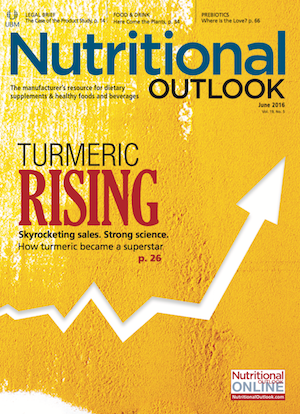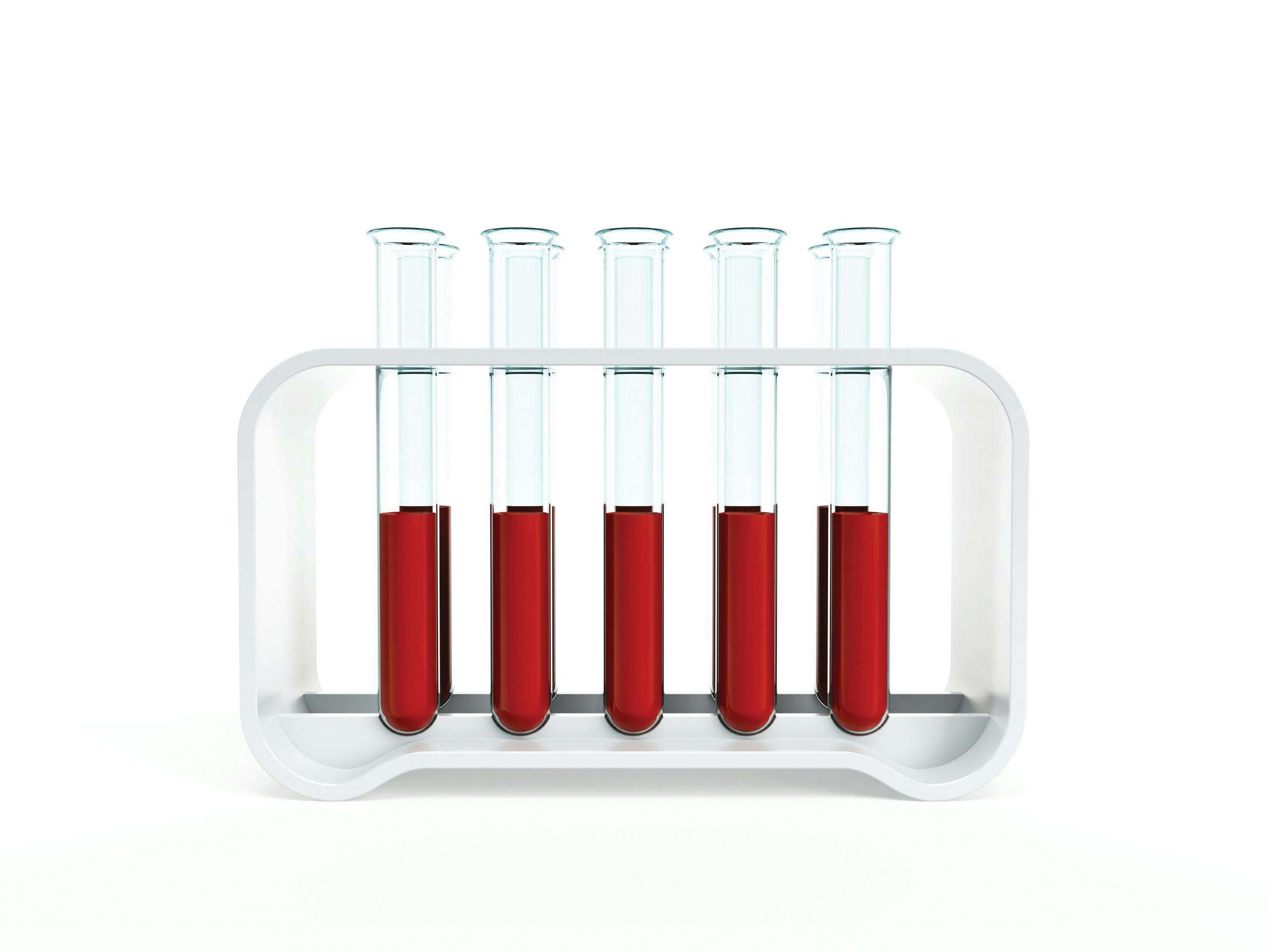Will Consumers Learn to Love Prebiotics?
Consumers may still be relatively unaware of prebiotics, but suppliers believe this potent powerhouse will one day get the attention it deserves.
Photo © iStockphoto.com/rzdeb

Once consumers wrapped their heads around probiotics, it was only a matter of time before the “good gut bugs” became a bona fide phenomenon. So the conventional wisdom on prebiotics-the plant fibers that feed those good gut bugs-was that they’d follow a similar gilded path to mainstream popularity. After all, fiber on the whole has seen its star rise thanks not just to its undisputed health benefits but to the ease with which manufacturers can now add it to everything from waffles to water. So consumers have every reason to pay attention to prebiotics.
“Unfortunately,” says Mark Thurston, president, AIDP Inc. (City of Industry, CA), “they aren’t paying enough attention.” Research his company commissioned found that only about 30% of participants “had some understanding around prebiotics and their health benefits”-which is a slim slice of the consumer-attention pie, at best.
But viewed another way, it’s also evidence that the prebiotic sector has room to grow. And grow it will, industry watchers insist. As prebiotic science continues to mount, and “with more probiotic products adding prebiotics for better and faster effectiveness,” Thurston says, “eventually the message will get out that prebiotics are necessary precursors for probiotics, acting as a ‘fertilizer’ of sorts to prepare the gut to use probiotics most effectively.”
Gut Punch
Prebiotics could do worse than serve as “gut groundskeepers” these days. That’s because gut health is definitely a thing. As Julio R. López, PhD, nutritional research and innovation manager, WILD Flavors & Specialty Ingredients (Chicago), says, Mintel data show that three out of four Americans rank maintaining a healthy digestive system as “very important,” and that the number of new-product launches bearing digestive-health claims rose a whopping 75% globally in 2010–2014.
“As consumers become more conscious of their overall health, they’re adopting a holistic approach that includes watching their diets, exercising more, and taking a preventive stance” that leads them to fiber, López says. “With 70% of the body’s immune system residing in the digestive tract, maintaining digestive health is crucial to the body’s overall wellbeing.” Indeed, none other than the National Cancer Institute reports that increased intake of dietary fiber correlates with lower risk of cardiovascular-, infectious-, and respiratory-disease deaths.1
Not Your Average Fiber
And this is just garden-variety fiber we’re talking about; the prebiotic variety offers yet an entirely additional set of health-and-wellness benefits of its own. What are they? Richard Staack, PhD, MBA, vice president, research and commercial development, Prinova USA (Carol Stream, IL), lists among prebiotics’ “useful properties” the “stimulation of intestinal transit; change in colonic microflora contributing to normal stool consistency and the prevention of diarrhea and constipation; a reduction in the level of triglycerides in blood and the liver; and improved nutrient absorption and production of B-complex vitamins”-all of which, he adds, “collectively leads to improvements in the immune system.”
But while all prebiotics are dietary fibers, it doesn’t necessarily follow that all dietary fibers are prebiotic. The seminal work2 on the subject strictly defines a prebiotic as an ingredient that 1) resists gastric acidity, hydrolysis by mammalian enzymes, and absorption in the upper gastrointestinal tract; 2) undergoes fermentation by intestinal microflora; and 3) selectively stimulates the growth and/or activity of “intestinal bacteria potentially associated with health and well-being”-that is, probiotics. So while “you see a lot of misuse” of the term in the market, says Anke Sentko, vice president, regulatory affairs and nutrition communication, Beneo (Morris Plains, NJ), if a fiber doesn’t meet those standards, it’s simply not prebiotic.
STORY CONTINUES ON PAGE 2
Mounting Science
The prebiotics that steal the spotlight as health-and-wellness ingredients are generally oligosaccharides, short chains of simple sugars found naturally in everything from garlic and asparagus to bananas, wheat bran, Jerusalem artichokes, and chicory root. And though “there’s no specific food crop that represents the optimal source of prebiotics,” says Michael Bond, product marketing leader, DuPont Nutrition & Health (Reigate, UK), “in terms of commercial extraction from these sources, only chicory and Jerusalem artichoke are used to any large extent as a source of purified prebiotics due to their relatively high oligosaccharide content.”
Sentko points to “more than 2,000 scientific publications“ that in the past five years have investigated prebiotics, their interactions with probiotics, and their communication with other parts of the body. “A number of these studies look into the gut-brain axis,” she adds, “which involves the influence of bacterial breakdown products and metabolites and their outreach to other organs and regulation mechanisms like hunger and satiety.”
Staack notes that research also points to the merits of xylooligosaccharides (XOS) as a class of “emerging GRAS, FDA-approved prebiotics with a decade of science and multiple clinical trials” demonstrating their selective feeding of good bifidobacteria as well as their ability to do so “at a lower dose rate than other prebiotics”-perhaps as low as 1 g/day.
And while researchers are excited about XOS, perhaps the “most well-known and well-researched prebiotic on the market” is good-old chicory root fiber, or inulin, says Scott Turowski, technical sales manager, Sensus America Inc. (Raleigh, NC). That ingredient has built up a solid track record of promoting bifidobacterial proliferation and has also been the subject of reams of compelling inquiries into its benefits vis-Ã -vis weight management and immunity. “We hope to understand more about its effects,” Turowski adds, “and how they can be translated into claims that consumers can understand.”
Closing the Information Gap
Which brings us back to those fickle consumers and the gap that persists between their grasp of prebiotics and the potential the ingredients have for improving their health. Alas, observes Bond, “As with probiotics, where only the most informed and committed consumers actively seek out products with specific strains, awareness of specific prebiotic ingredients remains relatively low in the broader market.”
That may be because some “crossover” of prebiotics with fiber creates “confusion in the consumer’s mind,” he posits. But despite the fact that consumer awareness of prebiotics “continues to lag behind that of the more established probiotics,” he contends, “the market for prebiotics and finished products with prebiotic claims continues to increase.”
Special Delivery
Staack agrees, and he cites figures from Frost & Sullivan’s February 2015 “U.S. Prebiotic Market Overview” as calculating the domestic prebiotic ingredient market at $227.8 million in that year alone, with estimates of it reaching $4.5 billion by 2020, representing a CAGR of 12.1%.
“The expected growth is driven by increasing consumer demand for prebiotic ingredients in supplements and foods and beverages,” he notes. “Consumers who have begun to understand the benefits prebiotics bring are now looking to incorporate prebiotics into their diets.” Fortunately for them and the makers of functional foods and beverages, that’s increasingly easy to do.
As Staack explains, “Prebiotics have superior thermal and pH stability, as well as a long shelf life at room temperature.” While neutral, shelf-stable solid products remain the best product environments in which “to meet stability issues,” he says, “overall, prebiotics are easier to formulate with than probiotics and can be formulated into multiple applications.”
Indeed, says Turowski, “There aren’t many limits to the types of foods where they can be used.” Novel ingredient formats make bars, beverages, dairy, baked goods, snacks, sauces-just about all the stuff consumers like-fair game. “For that reason,” he says, “understanding the types of products where consumers would expect to find prebiotics may be the more relevant question to ask when determining the best applications to develop.”
As far as prebiotic ingredients themselves go, Bond notes that polydextrose is one of the most versatile available. He credits its excellent solubility and process and storage stability for its “universal application and ease of use” in both liquid and solid applications, “including those that undergo thermal processing and exhibit extremes of pH,” he says. “It’s also a very well-tolerated prebiotic with minimal impact on the taste or texture of the finished product.”
And Sentko says that thanks to their solubility and “mild, sweet taste,” inulin and oligofructose are trouble-free ingredients that “maintain or even improve product taste and, as a humectant, help a product maintain moisture and texture over time.” By functionally replacing a portion of a formulation’s sugar or fat, they can also take a bite out of a product’s calorie count, to boot.
And perhaps most advantageous of all-at least for some consumers-is the fact that prebiotics, by and large, are “clean” ingredients, frequently extracted from non-GMO plant-based sources using chemical-free, hot-water methods. As Sentko says, “Consumers like the idea that prebiotics naturally help the body support its own natural process.”
But will consumers like prebiotics even more if the fibers irrevocably hitch their stars to the probiotic bacteria that helped put them on the radar in the first place? Though experts agree that prebiotics and probiotics will probably remain linked in consumers’ minds for some time, “the future success of prebiotics is not inextricably tied to the continued success of probiotics,” Bond insists. Rather, he believes, prebiotics’ star will continue to rise along with interest in digestive and immune health, as well as with “the ability of prebiotic producers to generate the requisite levels of scientific evidence to support meaningful claims in an increasingly challenging regulatory environment.”
Also read:
Prebiotic Ingredients: Nondigestible Oligosaccharides
Can Enzymes, Probiotics, and Prebiotics Work Together in One Product?
New Prebiotic Ingredient Suitable for Small Doses?
Cranberry Powder May Be a More Effective Prebiotic Food for Probiotics, Companies Say
References:
- Park Y et al., “Dietary fiber intake and mortality in the NIH-AARP diet and health study,” Archives of Internal Medicine, vol. 171, no. 12 (June 27, 2011): 1061-1068
- Gibson GR et al., “Dietary modulation of the human colonic microbiota: Introducing the concept of prebiotics,” The Journal of Nutrition, vol. 125, no. 6 (June 1995): 1401-1412






















